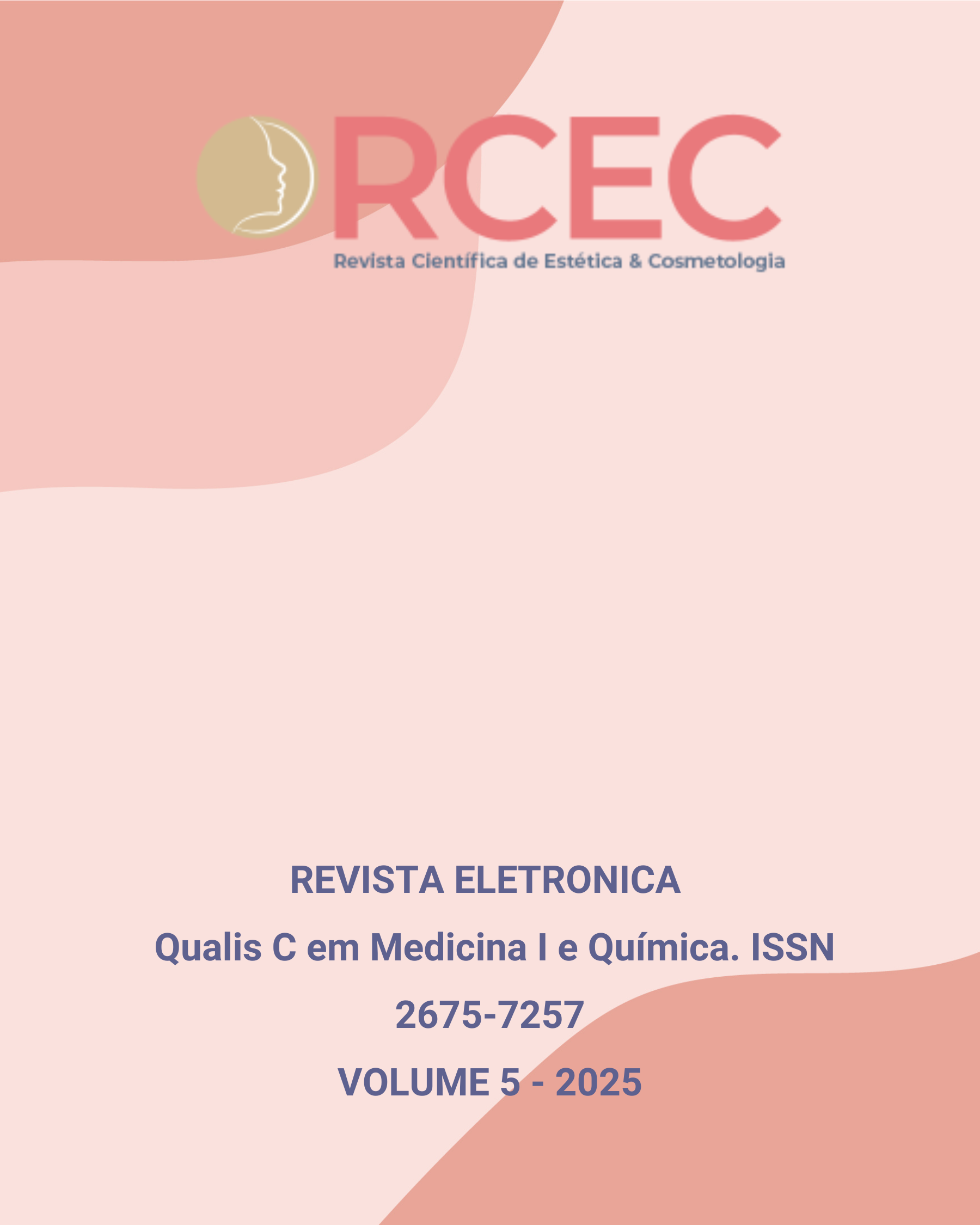Hair Coloring and Care in the Modern Era: Methods, Products, and Techniques for All Ages and Genders
Conteúdo do artigo principal
Resumo
In the modern era, hair coloring and care have evolved beyond their traditional roles of concealing gray hair or serving as gender-specific cosmetic practices. They now function as integral tools of self-expression, identity formation, and psychological well-being across all age and gender groups. This study aims to systematize and analyze contemporary methods, products, and techniques in both hair coloring and care, with an emphasis on their universal applicability. The research applies an interdisciplinary approach that integrates dermato cosmetology, psychology of image, and hairdressing practice. It includes a comparative analysis of traditional and creative coloring methods, assessment of hair care products, and a review of social and psychological studies on identity and well-being. The paper reviews a wide spectrum of coloring techniques (monochromatic dyeing, highlighting, toning, ombré, balayage, and color blocking) alongside care practices that maintain hair health and prolong color longevity. Special attention is given to the adaptation of these methods for different age groups, ranging from children and adolescents to adults and the elderly. The analysis highlights the importance of product safety, hypoallergenic formulations, and preliminary diagnostics of hair and scalp conditions. Furthermore, the study underscores the growing relevance of gender-neutral approaches, which prioritize freedom of style over traditional associations with femininity or masculinity. By integrating social and psychological perspectives, the findings demonstrate that appropriate choices in coloring and care positively influence self-esteem, social interaction, and overall psycho-emotional health.
Detalhes do artigo

Este trabalho está licenciado sob uma licença Creative Commons Attribution 4.0 International License.
Declaração de Direito Autoral - Proposta de Política para Periódicos de Acesso Livre
Autores que publicam na Revista Científica de Estética & Cosmetologia concordam com os seguintes termos: 1 - Autores mantém os direitos autorais e concedem à revista o direito de primeira publicação, com o trabalho simultaneamente licenciado sob a Creative Commons Attribution License que permitindo o compartilhamento do trabalho com reconhecimento da autoria do trabalho e publicação inicial nesta revista. 2 - Autores têm autorização para assumir contratos adicionais separadamente, para distribuição não-exclusiva da versão do trabalho publicada nesta revista (ex.: publicar em repositório institucional ou como capítulo de livro), com reconhecimento de autoria e publicação inicial nesta revista. 3 - Autores têm permissão e são estimulados a publicar e distribuir seu trabalho online (ex.: em repositórios institucionais ou na sua página pessoal) a qualquer ponto antes ou durante o processo editorial, já que isso pode gerar alterações produtivas, bem como aumentar o impacto e a citação do trabalho publicado.
Este é um artigo de acesso aberto sob a licença CC- BY
Referências
Abraham, L.S, Moreira, A.M., Moura, L.H., Dias, M.F. (2009a). Hair care: A medical overview: Part 1. Surgical Cosmetic Dermatology, 1(3), 130-136. Retrieved from http://www.surgicalcosmetic.org.br/details/27/en-US/hair-care--a-medical-overview--part-1-
Abraham, L.S., Moreira, A.M., Moura, L.H., Dias, M.F.(2009b). Hair care: A medical overview: Part 2. Surgical Cosmetic Dermatology,1(3),178–185.
Cesarini, J. (1990). Hair melanin and color. In C. Orfanos & R. Happle (Eds.), Hair and hair diseases (pp. 165–197). Berlin, Germany: Springer-Verlag.
D’Souza, P., & Rathi, S. K. (2015). Shampoo and conditioners: What a dermatologist should know? Indian Journal of Dermatology, 60(3), 248–254.
Deeksha, Malviya, R., & Sharma, P. K. (2014). Advancement in shampoo (a dermal care product): Preparation methods, patents and commercial utility. Recent Patents on Inflammation & Allergy Drug Discovery, 8(1), 48–58. https://doi.org/10.2174/1872213x08666140115110727
Draelos, Z. D. (2010). Essentials of hair care often neglected: Hair cleansing. International Journal of Trichology, 2(1), 24–29. Retrieved from https://pmc.ncbi.nlm.nih.gov/articles/PMC3002407/
Draelos, Z. D. (2013). Shampoos, conditioners, and camouflage techniques. Dermatologic Clinics, 31(2), 173–178.
Gavazzoni Dias, M. F. R. (2015). Hair cosmetics: An overview. International Journal of Trichology, 7(1), 2–15.
Kim, S., & Choi, Y. (2023). Skinification trend in scalp care: Applying skin care principles to hair health. Cosmetics, 10(3), 56.
Kim, Y., Kim, S., Moon, H., Yu, Y., & Noh, J. (2024). Scalp diagnostic system with label-free segmentation and training-free image translation. arXiv. https://doi.org/10.48550/arXiv.2406.17254
Krawczyk-Wołoszyn, K., Żychowska, M., & Reich, A. (2024). Evaluation of hair surface structure and morphology of patients with lichen planopilaris (LPP) by atomic force microscopy (AFM). Skin Research and Technology, 30(9), e70030. https://doi.org/10.1111/srt.70030
Lopez, R., & Garcia, M. (2024). Advances in hyperspectral dermatoscopy for scalp skin analysis. Biomedical Optics Express, 15(5), 3140–3152.
Nguyen, T. T., & Park, J. H. (2024). Age-related changes in scalp skin physiology and implications for hair care. International Journal of Cosmetic Science, 46(2), 120–129.
Orfanos, C. E., & Imcke, E. (1990). Hair and hair cosmetics. In C. E. Orfanos & R. Happle (Eds.), Hair and hair diseases (pp. 723–745). Berlin: Springer-Verlag.
Smith, J., & Lee, H. (2023). The scalp microbiome and its impact on hair health: A systematic review. Journal of Dermatological Science, 112(1), 45–53.
Suzuki, T., Chéret, J., Scala, F. D., et al. (2023). mTORC1 activity negatively regulates human hair follicle growth and pigmentation. EMBO Reports, 24(7), e56574. https://doi.org/10.15252/embr.202256574
Yamaguchi, H. L., Yamaguchi, Y., & Peeva, E. (2024). Hair regrowth in alopecia areata and re‐pigmentation in vitiligo in response to treatment: Commonalities and differences. Journal of the European Academy of Dermatology and Venereology, 39(3), 498–511.
Zhang, L., & Wang, M. (2023). Deep learning-based diagnosis of scalp disorders: A new approach to hair health assessment. Computers in Biology and Medicine, 158, 106701. https://doi.org/10.1016/j.compbiomed.2023.106701


